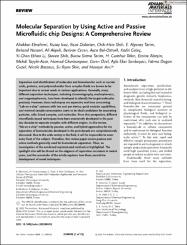| dc.contributor.author | Ebrahimi, Aliakbar | |
| dc.contributor.author | Icoz, Kutay | |
| dc.contributor.author | Didarian, Reza | |
| dc.contributor.author | Shih, Chih-Hsin | |
| dc.contributor.author | Tarim, E. Alperay | |
| dc.contributor.author | Nasseri, Behzad | |
| dc.contributor.author | Akpek, Ali | |
| dc.contributor.author | Cecen, Berivan | |
| dc.contributor.author | Bal-Ozturk, Ayca | |
| dc.contributor.author | Gulec, Kadri | |
| dc.contributor.author | Li, Yi-Chen Ethan | |
| dc.contributor.author | Shih, Steven | |
| dc.contributor.author | Tarim, Burcu Sirma | |
| dc.contributor.author | Tekin, H. Cumhur | |
| dc.contributor.author | Alarcin, Emine | |
| dc.contributor.author | Tayybi-Azar, Mehdi | |
| dc.contributor.author | Ghorbanpoor, Hamed | |
| dc.contributor.author | Ozel, Ceren | |
| dc.contributor.author | Sariboyaci, Ayla Eker | |
| dc.contributor.author | Guzel, Fatma Dogan | |
| dc.contributor.author | Bassous, Nicole | |
| dc.contributor.author | Shin, Su Ryon | |
| dc.contributor.author | Avci, Huseyin | |
| dc.date.accessioned | 2025-05-08T12:17:50Z | |
| dc.date.available | 2025-05-08T12:17:50Z | |
| dc.date.issued | 2024 | en_US |
| dc.identifier.issn | 2196-7350 | |
| dc.identifier.uri | https://doi.org/10.1002/admi.202300492 | |
| dc.identifier.uri | https://hdl.handle.net/20.500.12573/2528 | |
| dc.description.abstract | Separation and identification of molecules and biomolecules such as nucleic
acids, proteins, and polysaccharides from complex fluids are known to be
important due to unmet needs in various applications. Generally, many
different separation techniques, including chromatography, electrophoresis,
and magnetophoresis, have been developed to identify the target molecules
precisely. However, these techniques are expensive and time consuming.
“Lab-on-a-chip” systems with low cost per device, quick analysis capabilities,
and minimal sample consumption seem to be ideal candidates for separating
particles, cells, blood samples, and molecules. From this perspective, different
microfluidic-based techniques have been extensively developed in the past
two decades to separate samples with different origins. In this review,
“lab-on-a-chip” methods by passive, active, and hybrid approaches for the
separation of biomolecules developed in the past decade are comprehensively
discussed. Due to the wide variety in the field, it will be impossible to cover
every facet of the subject. Therefore, this review paper covers passive and
active methods generally used for biomolecule separation. Then, an
investigation of the combined sophisticated methods is highlighted. The
spotlight also will be shined on the elegance of separation successes in recent
years, and the remainder of the article explores how these permit the
development of novel techniques. | en_US |
| dc.description.sponsorship | This study was supported by the Turkish Scientific and Technological Council (TÜB˙
ITAK) under the grant numbers of 119N608. Y.C.E.L. would like to
thank the Ministry of Science and Technology, Taiwan (MOST 109-2221-E035-036-MY3, and MOST 110-2124-M-005-001-MY3), for supporting this
work. H.C.T. acknowledges financial support from The Scientific and Technological Research Council of Turkey (grant number 119M052). H.C.T.
would like to thank Outstanding Young Scientists Award funding (TUBA
GEBIP 2020) from the Turkish Academy of Science. E.A.T. and C.Ö. acknowledge the support of The Scientific and Technological Research Council of Turkey for 2211-A BIDEB doctoral scholarship, and Turkish Council
of Higher Education for 100/2000 CoHE doctoral scholarship. H.G. would
like to thank The Scientific and Technological Research Council of Turkey
(grant number 222M468) for supporting this work. This study was supported by Turkish Scientific and Technological Council (TUB˙
ITAK 1004-
Regenerative and Restorative Medicine Research and Applications) under the grant numbers of 20AG003 and 20AG031 and Scientific Research
Projects (BAP- the priority areas project (ONAP) under the grant number
of TOA-2022-2307 and TYL-2023-2720 of Eskisehir Osmangazi University.
This study was supported by Yildiz Technical University Scientific Research
Projects with the project number TSA-2022-5317. | en_US |
| dc.language.iso | eng | en_US |
| dc.publisher | WILEY Advanced | en_US |
| dc.relation.isversionof | 10.1002/admi.202300492 | en_US |
| dc.rights | info:eu-repo/semantics/openAccess | en_US |
| dc.subject | Active-separation | en_US |
| dc.subject | Biomolecule separation | en_US |
| dc.subject | Hybrid separation | en_US |
| dc.subject | Lab-on-a-chip | en_US |
| dc.subject | Microfluidics | en_US |
| dc.subject | Passive separation | en_US |
| dc.title | Molecular Separation by Using Active and Passive Microfluidic chip Designs: A Comprehensive Review | en_US |
| dc.type | review | en_US |
| dc.contributor.department | AGÜ, Mühendislik Fakültesi, Elektrik - Elektronik Mühendisliği Bölümü | en_US |
| dc.contributor.institutionauthor | Icoz, Kutay | |
| dc.identifier.volume | 11 | en_US |
| dc.identifier.issue | 2 | en_US |
| dc.identifier.startpage | 1 | en_US |
| dc.identifier.endpage | 45 | en_US |
| dc.relation.journal | ADVANCED MATERIALS INTERFACES | en_US |
| dc.relation.tubitak | 119N608 | |
| dc.relation.publicationcategory | Diğer | en_US |


















